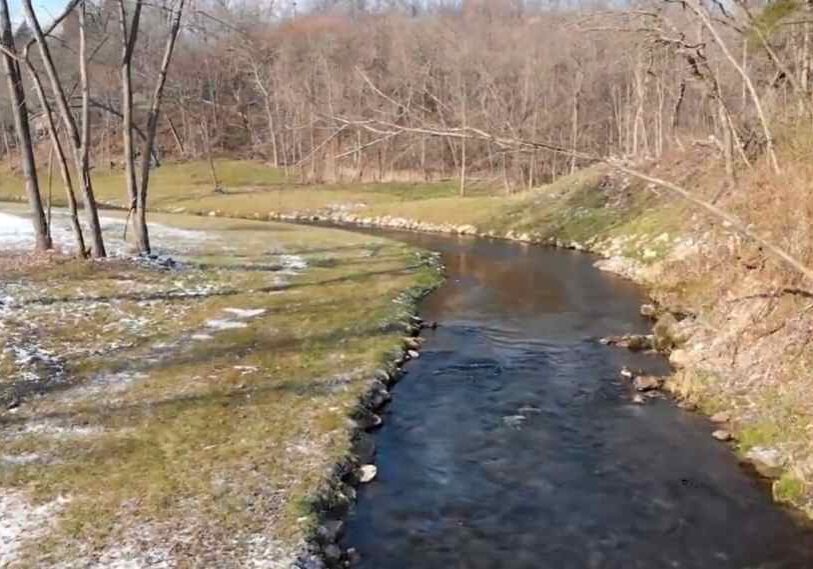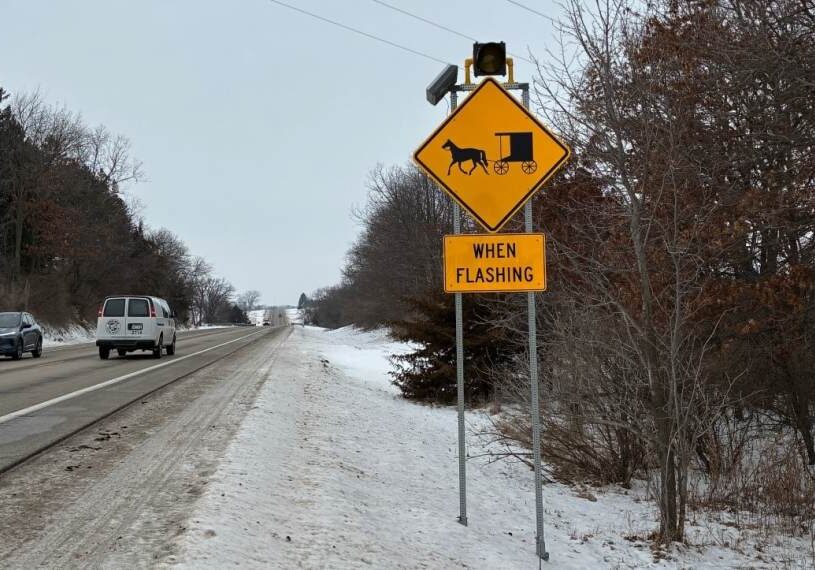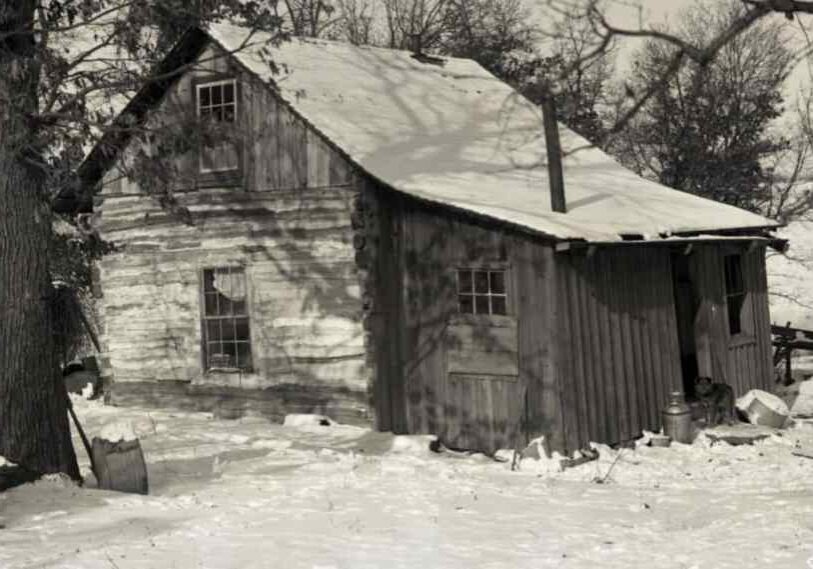Moving Day for a 19th Century Bridge at Historic Forestville

FORESTVILLE TOWNSHIP, FILLMORE COUNTY — A small group of local residents were on hand for moving day at Historic Forestville when the steel bridge that has spanned the South Branch of the Root River for more than a century was removed from its foundation.

The bridge was closed in 2022 when a bridge inspector concluded the bridge was unsafe for pedestrian traffic. (Photo by Dave Shaffer)
The Gillette-Herzog Manufacturing Company of Minneapolis built the 100-foot-long by 16-foot-wide steel truss bridge in the late 1800s. On Tuesday, November 14, ICON Constructors LLC, a bridge and highway contractor from Mabel, Minn., used a giant crane to lift the structure (see video below) and store it on the south side of the river. The bridge weighed 40,000 pounds when hoisted off its footings.
This is the first phase of a joint bridge restoration project between Fillmore County, Minnesota Department of Natural Resources (DNR), and Minnesota Historical Society (MHS). In the second phase, this coming year, the DNR will build a temporary walking bridge across the river. Ultimately it is hoped that funds can be found to fully restore the historic bridge and return it to service connecting Historic Forestville to the adjacent state park.
Separated by a river
The historic town of Forestville, operated by the Minnesota Historical Society, was cut off from the Forestville/Mystery Cave State Park after a state bridge inspector in December 2022 concluded the 1899 bridge over the South Branch of the Root River was so unsafe that people shouldn’t walk on it.
That made it impossible for people visiting the state park to reach Historic Forestville unless they hopped in their cars and skirted around the park on 10 miles of local roads.
For the 2023 season, the historical society limited the town’s programs to scheduled events and student tours. In years past, summer visitors in the park could walk to the town site and easily take tours from guides in period costumes.
To restore Forestville’s visitation schedule, the DNR plans to erect a pedestrian bridge upstream of the closed bridge. It’s expected to be ready in May 2024, and remain in place until the historic bridge is restored, which may take several years.

ICON Constructors of Mabel, MN positioned a crane and large backhoe to lift the 40,000 bridge off its pilings. (Photo by John Torgrimson)
Forestville became one of Minnesota’s early settlements after the Treaty of 1851. The town contains Thomas Meighen’s General Store, which operated from the 1850s until 1910, and other buildings that are on the National Register of Historic Places.
Among oldest county bridges
The 124-year-old Forestville bridge is thought to be the oldest county-owned bridge in Fillmore County, originally constructed to carry wagon traffic and an example of the early use of steel instead of iron. Most of its features, including decorative crests on each portal, are intact.
Across Minnesota, there are just eight other 19th century metal bridges with a similar “through truss” design, according to the current MNDOT inventory of historically significant bridges. The inventory catalogs known bridges that are eligible for or on the National Register. One of the others is the 1893 Coffee Street Bridge in Lanesboro, which was restored in 2002 for pedestrian use.
The problem with the Forestville bridge lies beneath its steel beams and wood planking. “It is structurally deficient,” Fillmore County engineer Ronald Gregg said of the bridge. “The abutments have deteriorated to the point that high water and debris could knock them out.”
That’s why the truss was removed now – even before funding is available for full restoration. If the deck and truss had remained on the abutments, and if they failed during high water, the historic metal truss could have been hurled downstream and likely destroyed.
Seeking state funding
Before the restoration can take place, state and county officials need to raise $1.9 million. They are looking to the Minnesota Legislature for help, but struck out in 2023. “We don’t have funding in hand now for preservation of the bridge,” said David Kelliher, director of public policy and government relations for the Minnesota Historical Society.
“Some of the funding cycles are a few years out. We don’t have a sense of how long that might be.”
That said, County Engineer Gregg said that an application for funding for bridge rehabilitation has been submitted to the state legislature for consideration in a future bonding bill.
Fillmore County’s share of the $150,000 price tag for removing the bridge was $98,000 with the DNR picking up the balance. The long-term plan is to hand over the structure to the state. It has been closed to traffic since 2008, and after restoration, it will remain that way except for service vehicles.
Part of the long-term plan is for the restored bridge to carry bicycle traffic on an extension of the Root River State Trail between Preston Forestville/Mystery Cave State Park. The 2023 Legislature separately approved $2 million to design the trail part from Preston to Carimona, near the park. But finishing the trail segment is still years away.






